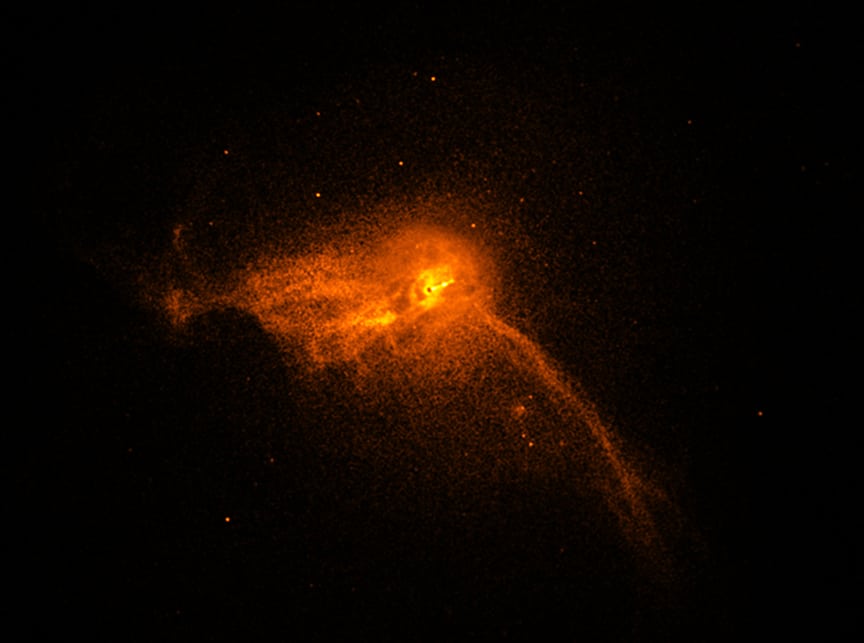

In 2019, the first photo of a black hole was shared with the world. This image is even more impressive when you zoom out further.
Last week, researchers unveiled the first-ever image of Sagittarius A, the black hole at the center of our Milky Way. Yet it was not the very first snapshot of a black hole. That honor went to this photo of the black hole in galaxy M87 in 2019. The photo was taken by a global network of radio telescopes, namely the Event Horizon Telescope project.
While radio telescopes on Earth worked together to create the brilliant image of the supermassive black hole in M87, the Chandra X-ray telescope photographed the vicinity of M87. The result of this is the space photo of the week.
We start with the well-known photo of the black hole…

Then we zoom out. The Chandra X-ray observatory is unable to see the black hole’s shadow, but many other details surrounding the black hole are visible. For example, we see a jumble of magnetic fields and gravitational fields around the singularity. On the right is a powerful gas stream more than a thousand light-years long. Astronomers call such a gas flow a jet.

Zoomed out a little further, we see the further vicinity of M87. This photo is perhaps just as important as the detail photo from the Event Horizon Telescope. Picture a trumpet player in a concert hall. Thanks to the EHT, astronomers get a close-up view of the trumpet’s mouthpiece. Thanks to Chandra, researchers can see the sound waves coming from the trumpet and can investigate the reverberation in space. Both pictures are important to put the puzzle pieces together. As a result, astronomers better understand how black holes work and how they influence their environment.

The galaxy M87 is located 60 million light-years from Earth. The galaxy is located at the center of the Virgo Cluster, a group of galaxies fifty million light-years away from Earth. M87 doesn’t have fancy spiral arms, like our Milky Way Galaxy, but is a gigantic ball of stars. When you put all the stars, black holes and nebulae in this galaxy on a scale, the total weight is comparable to two to three trillion suns combined. In comparison, our Milky Way has a weight of ‘only’ 700 billion suns. Messier 87 is known for its many globular clusters. Our Milky Way galaxy has 150 globular clusters, but M87 has 4,000 to 15,000!
Astronomers think that giant galaxies like M87 are continuously swallowing small galaxies, making them bigger. However, it is difficult to prove this. Just pour a glass of water into the North Sea. Can you still find this glass of water after an hour? Probably not, because the water mixes with the seawater quite quickly. This also applies to dwarf galaxies that merge into larger galaxies.